A couple of weeks ago, you might have heard about the forthcoming launch of a new-to-market, British designed and built, M-Mount 50mm f/2 Sonnar formula lens called the Skyllaney ‘Bertele’?
If you read this website frequently, you might know that I am a bit of a Sonnar fanatic, so you can imagine my excitement. Funnily enough, I think quite a few people gauged my potential excitement quite well as I had 9 emails and messages linking me to the news on various websites, not least this article on DPR.
Not one to sit on my hands when I hear such news I decided to get in touch with Skyllaney Opto-Mechanics and see if they might be interested in talking to me. As it turned out, the man at the helm is a chap called Chris Andreyo, a reader of 35mmc, someone who knows of my obsession with Sonnar formula lenses, and in fact someone I have chatted to by email before when he’s bought lenses off me in the past.
We ended up chatting on the phone for about 1 1/2 hours that day, and indeed have done so for similar periods of time a few times since. It’s fair to say, we have quite a bit in common about the way we think about lenses and photography as a whole.
We have hatched a few plans to work together too. I am going to be testing a prototype of the Bertele lens as soon as one is ready, I’m also going to be reviewing and selling some of his reconditioned lenses on my shop. In the meanwhile though, I thought it might be nice if I gave Chris a bit of a platform to tell you guys a bit about what he does. So as I’ve done a few times now, I thought a bit of an email interview would give him that chance.
The following is a slightly edited transcript of those emails. I’m sure if you have any questions at the end, Chris will be happy to answer at least some of them…
H: Ok, so let’s kick off with a bit of background, who are you, where are you, and what’s your background?
C: My name is Christopher Andreyo. I’m the managing director and chief engineer at Skyllaney Opto-Mechanics.
I was born and grew up in the United States (New York), and studied Mechanical Engineering with a concentration in Aerospace Science, in addition to further military training in Electromagnetics and Radar. I’ve also self-studied optical design theory and ray-tracing, having a special affection for early optical designs by Dr. Ludwig Bertele.
I’ve lived in the United Kingdom for the last 13 years, which I love and now call home. We’re currently located in Warwickshire, which as I’m sure we will get to is a great place to be in this business.
For the 20 years of my working life before launching Skyllaney Opto-Mechanics, much of my work was specialised in complex Opto-Mechanical assemblies for the aerospace, nuclear and laser industries, often dealing with precisions and tolerances as small as 5um.

In fact, this is more or less how I ended up living in the U.K. In 2007. My immigration here was sponsored by an organisation who were unable to find someone who specialised in some of the very niche fields I worked in. It was opto-mechanics with electromagnetics, but let’s just say they weren’t using the sort of kit Sony or Nikon might make, and needed a much more bespoke solution.
H: So how did you get from there to where you are now, restoring, tinkering with, and now designing lenses?
C: I was designing opto-mechanical assemblies that specialised in multi-axis lens element movement systems. Some opto-mechanical devices are extremely similar to the way a camera lens works, except it may have a laser beam going through it or some other form of electromagnetic radiation.
Then, at some point several years ago, I found myself with Brian Sweeneys guide in one hand, and a Jupiter-3 lens in the other. I think this was the starting point where rangefinder lenses, with their complex mechanical beauty, became more than just a hobby.
This just gradually overtook the other work I was interested in. Had I not found Brian’s published works on Jupiter lenses, I might have never started this escapism journey with dissecting, dismantling and restoring hundreds of lenses that ultimately lead to where the company is now. I partly blame Brian for where we are now, in a very good way!
In the end, Skyllaney was set up to allow us to exit out of those industries, and to start focusing on camera lenses for consumers. Nearly all camera lens and rangefinder work was done as a side interest, but as it started to grow and I realised it was a viable career option that addressed certain needs other industries for me didn’t, I wanted to break ties with the past and set up a new business. So that’s how Skyllaney was born.
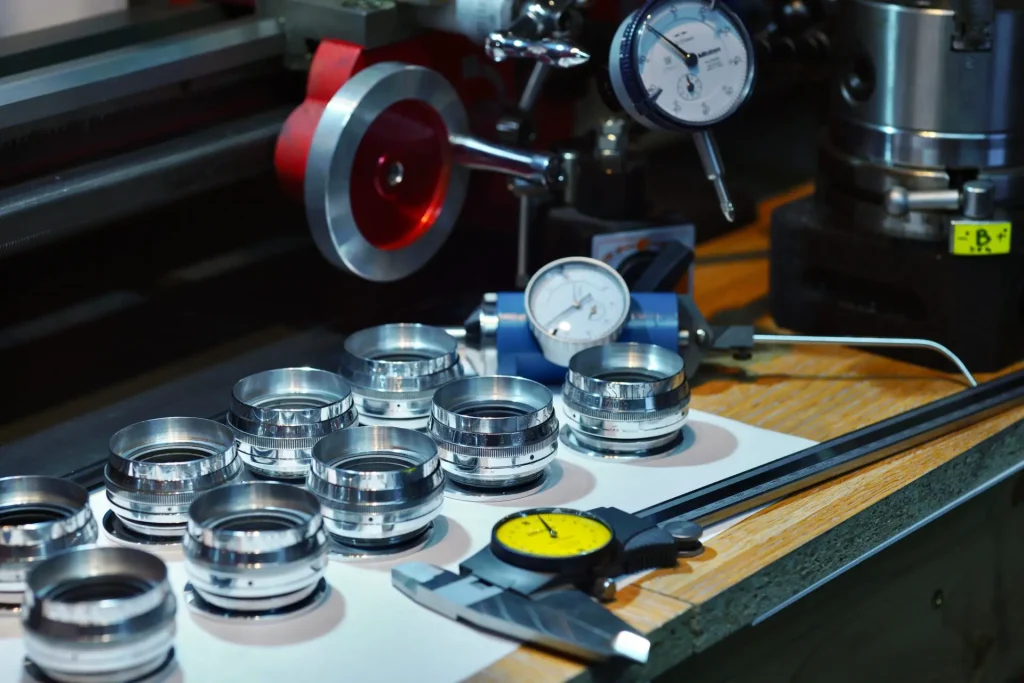
H: So how long has Skyllaney Opto-Mechanics been up and running then – I feel like it might be the U.K.’s best kept secret, at least by my standards…
C: We launched Skyllaney Opto-Mechanics this month, but the preparation for its launch has been underway for nearly two years.
In this regard, maybe that’s the secret part, as we never advertised before launching Skyllaney Opto-Mechanics. Yet we have been doing rangefinder and mechanical camera lens work for several years now.
H: Ah ok, that makes some sense. I’m still a little frustrated at myself for not knowing about you before – I would have definitely had you do one of your Sonnar lens overhauls for me.
Which is probably a good place to start this conversation really. Ignoring the big news of the new Sonnar lens for a moment, can you tell my readers a little bit about what you have been doing for the last couple of years in the build up to the ‘Bertele’ announcement? Who has been your average customer, and what do they come to you for?
C: Sure. We’ve been procuring large batches of Soviet-made Sonnar lenses from Russia and Ukraine, and have been restoring them, in addition to calibrating and adjusting them for Leica mount cameras. We also have been taking Contax Jena lenses and transplanted them into these restored Soviet bodies. Conversions to Contax SLR lenses to M mount also were being done.
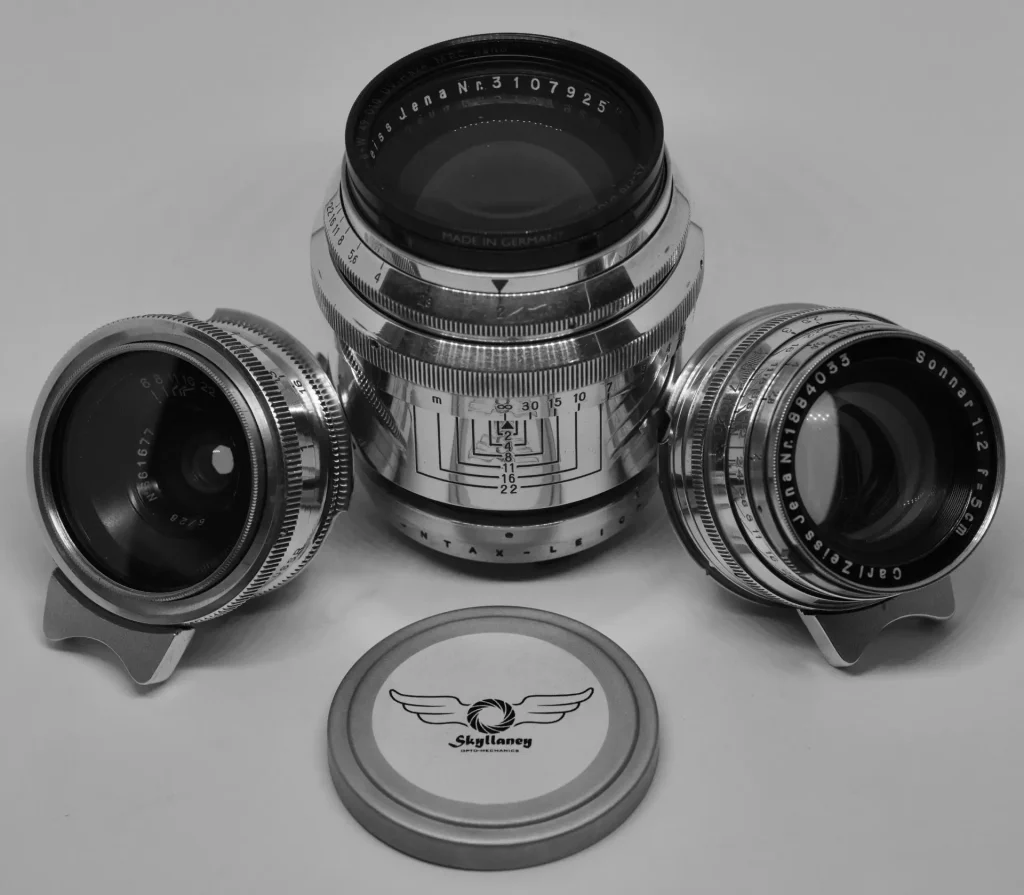
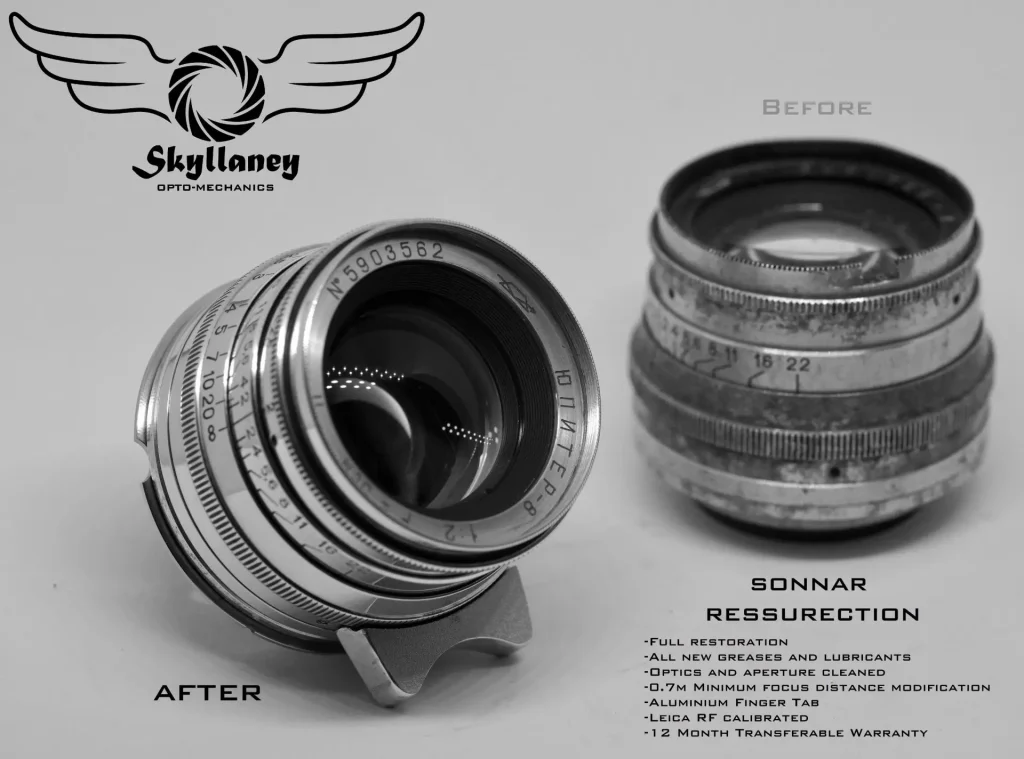
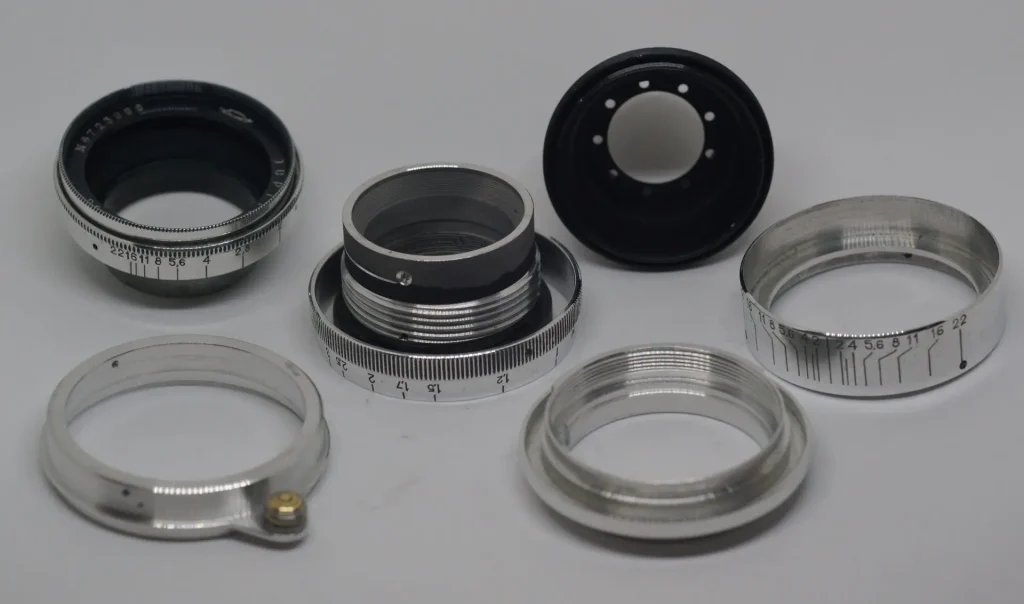
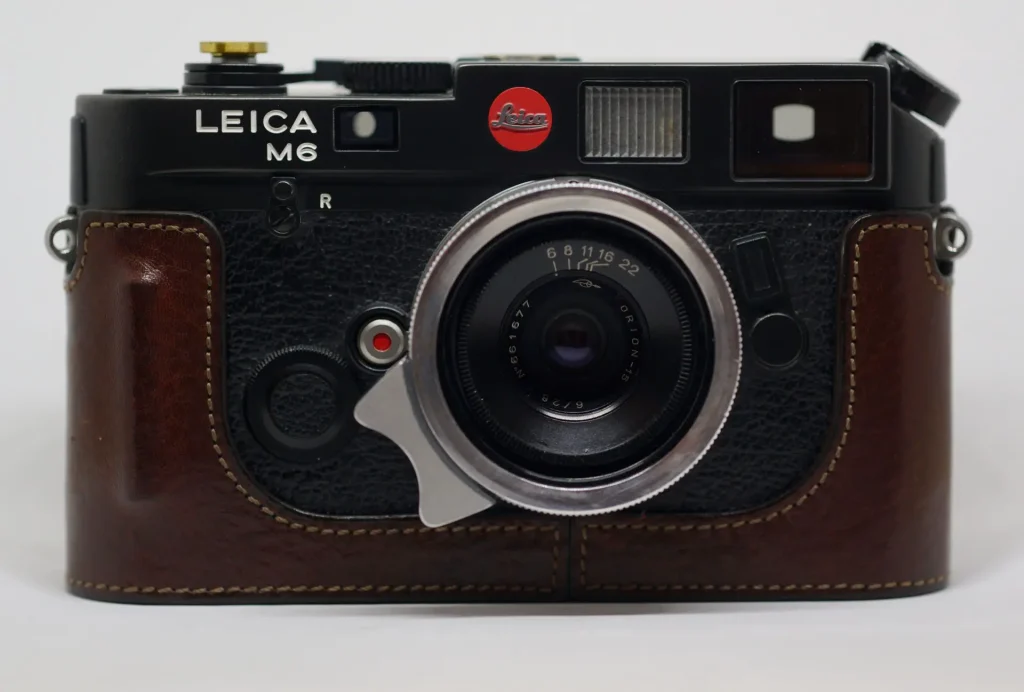
After a while, certain European based camera shops began contacting us because they saw our restoration and conversion work, requesting we service and convert lenses for them that may have come to them via trade-in. Many people may not realise that often the used lens sitting in a camera store cabinet doesn’t always come to that store in that condition when it gets traded-in. If they don’t have an in-house repair technician, they then have to out-source the repair and restoration work.
Word of mouth spread further, and we started to get specific requests from people to perform full restorations and service on lenses in their personal collections. Aside from web sales of the finished and restored items, none of the service work was ever advertised. It still amazes me as to how it grew and grew over time.
What in the end really convinced me to launch Skyllaney Opto-Mechanics was two things: First, we began to get some radical requests. There were a few people who messaged me stating they had lenses that Zeiss and Leica would no longer agree to repair or service.
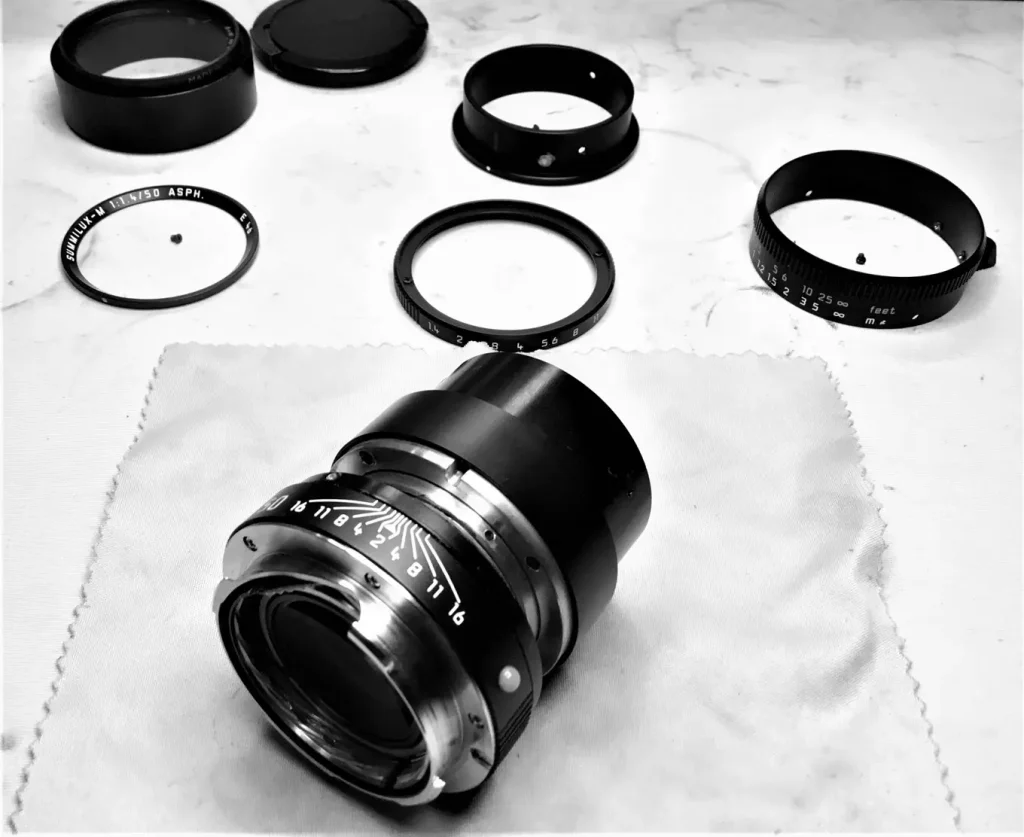
Some of these were lenses that had significant mechanical impact damage; others had missing parts that no longer were manufactured or could not be sourced.
We were able to design the missing parts with CAD software and fabricate them in our workshop, getting these lenses that were previously deemed as scrap or for spare parts, into fully functional and working states.
Secondly, friends who owned lots of rangefinder equipment were telling us that the repair times they were dealing with were becoming very long and often they needed to send things away internationally to be serviced. We began to service their equipment for them and then received referrals from friends of those friends. We were made aware that a few of the lens repair technicians were starting to retire, and that users on various forums seemed to be experiencing a crisis of whom to send their non-Leica lenses to for repair or servicing.
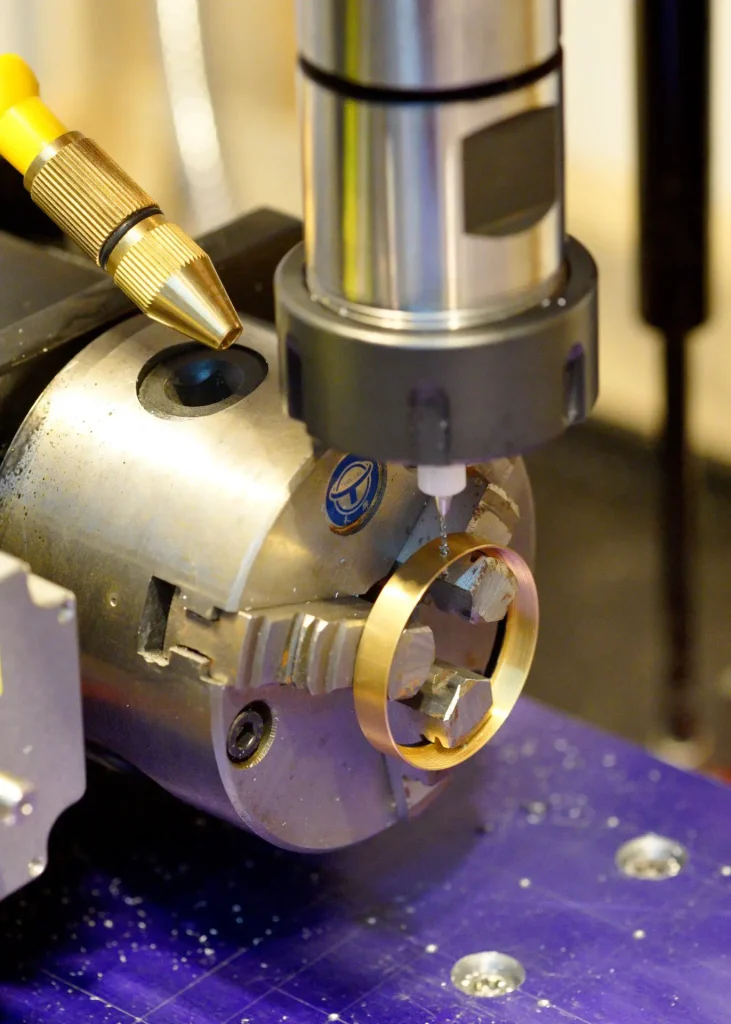
H: Ok, so is that where the idea to make your own lens came from then? You started designing some parts, so then figured why not design them all? Or is there more to it than that?
C: Part of my background with other industries had me learn how to model optics, even perform ray-tracing and generate technical drawings for lens fabrication. I’m no Peter Karbe or Walter Mandler, and never will be. The mechanics side of the lenses, is my strongest area by far. But I can tweak existing designs, perform calculations on those, and even make optical models and technical drawings for their re-fabrication if needed. I do have about eight years of experience also modelling antenna patterns and performing electromagnetic simulations on those antenna patterns. When ones realises that the visible light spectrum is merely a subset of the greater electromagnetic spectrum, you can begin to see where multiple disciplines can start to cross over.
I doubt I could design something like the modern ASPH optical formulas that Voigtlander, Zeiss and Leica make. But resurrecting and extrapolating existing designs is a bit more up my alley, as most of the hard work is already done, I’m merely tweaking and manipulating it.
As an example of this, I was dabbling with ray-tracing software at home, trying to discover what the perfect correction filters would be for my collection of Leica, Zeiss and Voigtlander lenses for usage on some Sony A7 series cameras. The issue was, rangefinder lenses were not performing on Sony cameras in the same way they were performing on Leica cameras, and I was trying to understand why, and how to correct this.
Haruhiko from Japan first introduced me to this, so I can take no credit for the idea at all. But I had the same issue he did, as did others so I worked to see which correction lenses would fix various lenses via ray-tracing. I then procured what theoretically would be the best correction lenses for each lens formula I owned, put those correction lenses into housings to mount on my Leica, Voigtlander and Zeiss lenses, either made a special adapter that moved the rangefinder lenses closer to the Sony sensor to compensate for the correction filters registration distance change, or internally adjusted the rangefinder lenses to have a new film plane registration distance, and began trial tests.
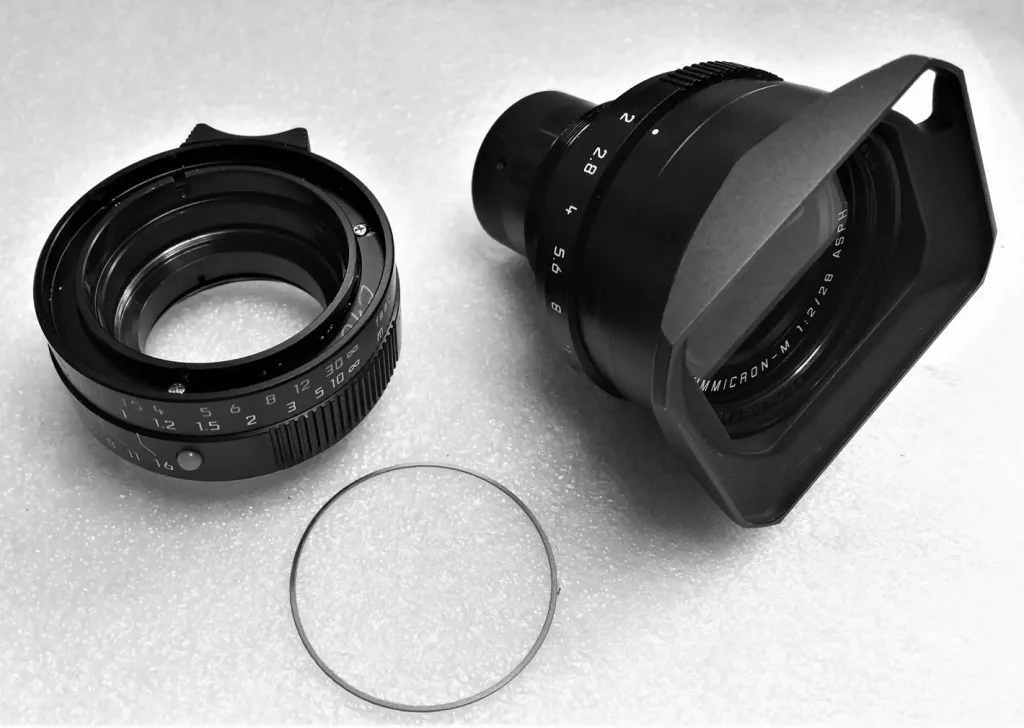
A lot of this was published on the Fred Miranda forums here. Even Fred there began to dive in and experiment with these correction filters on rangefinder lenses. It’s one of the largest technical threads I’ve seen from the photographic community and goes to show how new things can be discovered merely by a community of enthusiasts who are passionate about the subject matter at hand.
From there, at some point, the question did arise, why not just design a rangefinder lens? Part of this was also pushed by a good friend I have in Paris, who really, really wanted me to design a Sonnar lens with proper high-quality mechanics. From the experience of servicing and restoring lenses, coupled with a background in opto-mechanics and my enthusiasm for vintage lens formulas, designing our own lens became a personal goal of mine in the last few years.
Especially since Light Lens Lab showed many that older vintage formulas could be brought back and remade. If they could do this with the 8-element 35mm V1 cron formula, why couldn’t we do this with some of the 1930s Bertele formulas too?
Not all manufacturers publish optical diagrams (Zeiss is often very good with doing this, other manufacturers less so). So, I began to dismantle my own collection and take optical measurements to try and model the formulas in ray-tracing software.
I’m fortunate enough also, that the Dr. Bertele lens formulas, pre-war, are rather open and contain no patents. This has to do with the patent invalidation that occurred at the end of WW2, which allowed companies like Canon, Nippon Kogaku and KMZ to manufacturer cloned versions of the classic Sonnar formulas with impunity.

H: Ok, so let’s talk specifically about the ‘Bertele’ then. Tell me a bit about the lens?
C: We started this project because there appears to be no native M mount lens of the 50mm f/2 Sonnar. And anyone that may have either the pre-war Jena Sonnars or post-war Opton Sonnars, has to deal with either using these lenses in less than ideal adapters or have the optical blocks transplanted into donor helicoid bodies – as Brian did for you with your Jupiter-8M. Even then, the donor bodies are often Soviet LTM helicoids, so no native M mount seems to exist, at least from my own research.
Zeiss redid the 5cm f/1.5 Sonnar Formula via the Zeiss ZM C-Sonnar. I have this lens and will admit, the optics are very lovely, and I know you agree. I often shoot my copy at f/2.2, where I find personally, the bokeh takes on a very smooth character.
The 5cm f/2 Sonnar formulas are a bit different than their faster f/1.5 brethren. Most people think the only difference is the f/1.5 formulas are about a stop faster. In my experience and others, the f/2 formulas actually seem to render smoother bokeh at the apertures both lenses overlap – again this is something I think you discovered yourself.
The f/2 formula also seems to be sharper into the corners by f/8. The f/1.5 formulas, never seem to get the corner sharpness the f/2s can achieve, though it’s fair to say a good f/1.5 has very good central sharpness. A lot of this also varies depending on who made which Sonnar, and quality variations too.
So, with no native M mount version, and some areas where the slower f/2 formulas have advantages over the faster f/1.5 formula, we thought this was a very good start for our first lens.
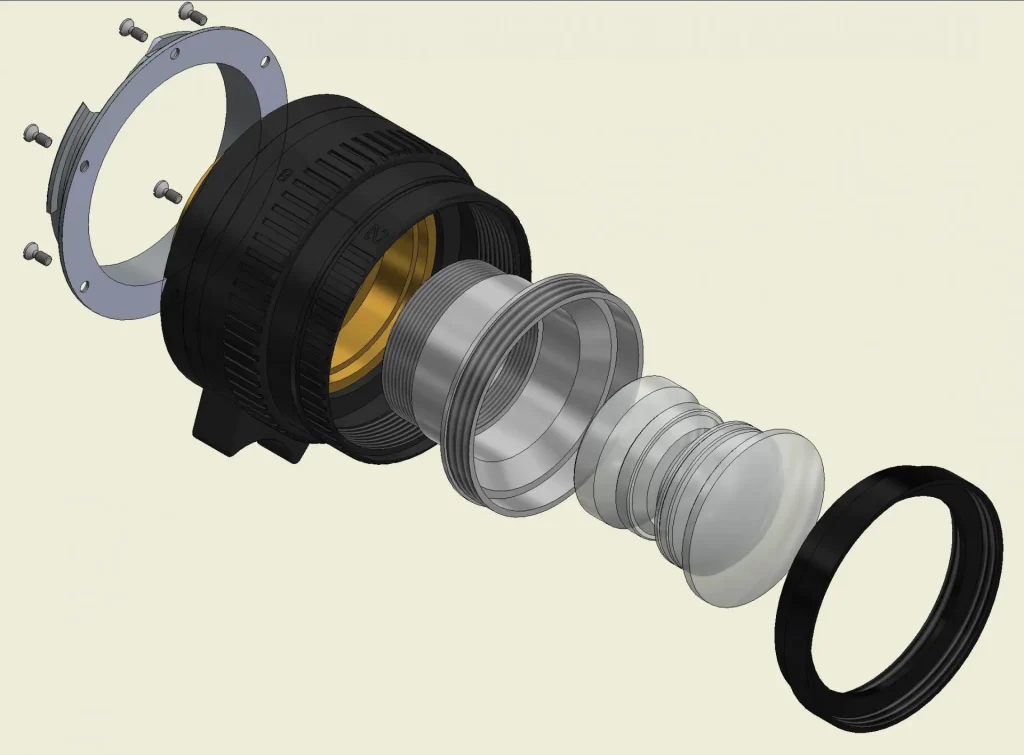
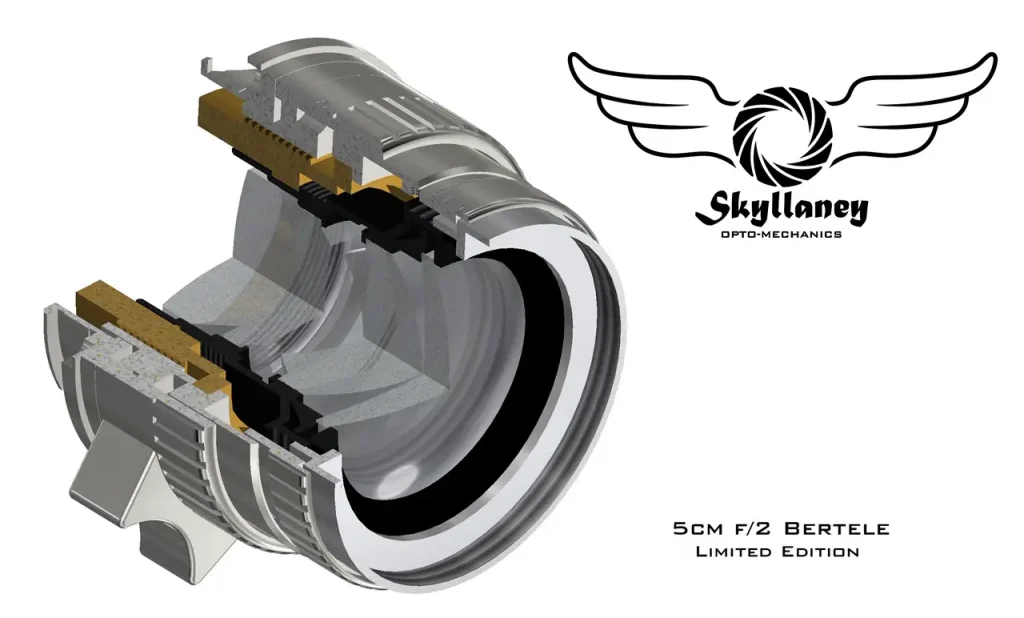
I will also add, for the Bertele lens, we were evaluating between the Dr. Bertele 1932 and 1937 formulas of the 5cm f/2 Sonnar. This was not mentioned in our initial announcement. We have found the pros and cons of each. I had a hard time actually choosing between the formulas, and after speaking with our partners post announcement, decided to simply try and offer both.
The initial 150 blocks will be 1932 formula. The second batch, which is the last 100, we are now planing for them to be the 1937 formula. As to why plan on now offering both? A simple answer would be, sometimes when we are attempting to correct aberrations on a lens to improve another area, this can have an adverse effect on the rendering and bokeh.
The 1937 formula was an attempt to improve on the 1932 formula. Life seems to be full of trade-offs sometimes.
Another example I could give of this in production lenses is the difference between the original pre-war Jena 8.5cm f/2 Sonnar, and it’s corrected post-war copy made by Nippon Kogaku, known as the 8.5cm f/2 P.C. lens. Anyone who has ever used both side by side, will immediately realise the difference. Possibly something similar could be said for the 1932 vs 1937 formulas.
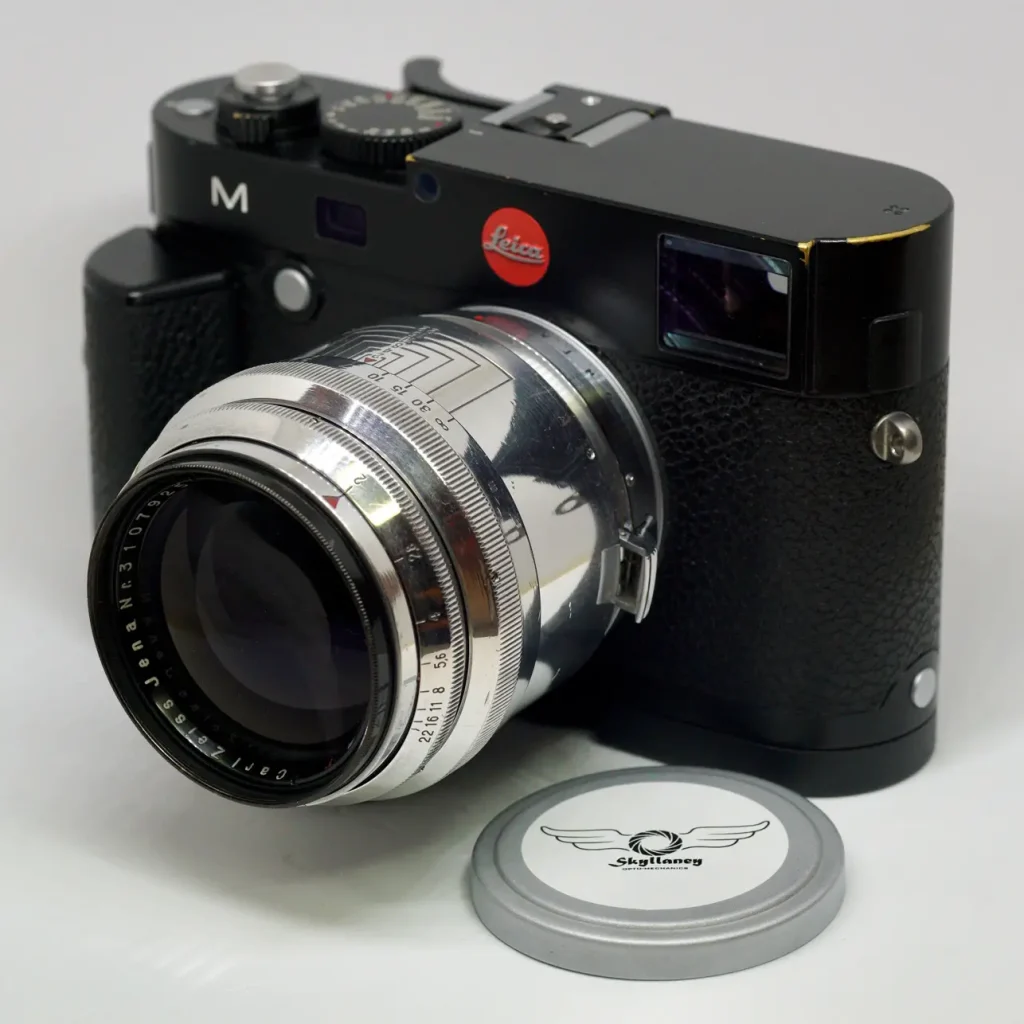
Personally, I like the smoother rendering of the 1932 formula, but others might like the 1937 formula more, it probably comes down to personal tastes. So if anyone must be blamed for the confusion and split, it squarely rests on my shoulders, and I do apologise, but what is life without variety?
Optically the two versions will be different, but mechanically, they will still remain the same. To differentiate them, they will have an appropriate notation on the front ring. We had planned to announce this split in July when our next update on the project takes place, so your readers are the first to hear there are now going to be two versions.
H: I know you’re a Sonnar fan, and you know the same about me. But assuming some of the readers out there aren’t as fanatical as we are, what’s the attraction here?
C: At some point, I owned about 80+ lenses, most of them being modern designs like the Leica and Voigtlander ASPH lenses. I’ve ended up selling most of these, yet still for some reason hold on to about 30 different Sonnars – a few of which I have recently loaned to you and hope you will find time to write a bit about for the website. (H: I will)
The photography I do for personal enjoyment has less to do with documenting the scene perfectly, so all detail is rendered sharp and crisp, and more to do with wanting to capture the scene as a form of fine art. Sonnars have become my paintbrush or choice with that goal in mind.
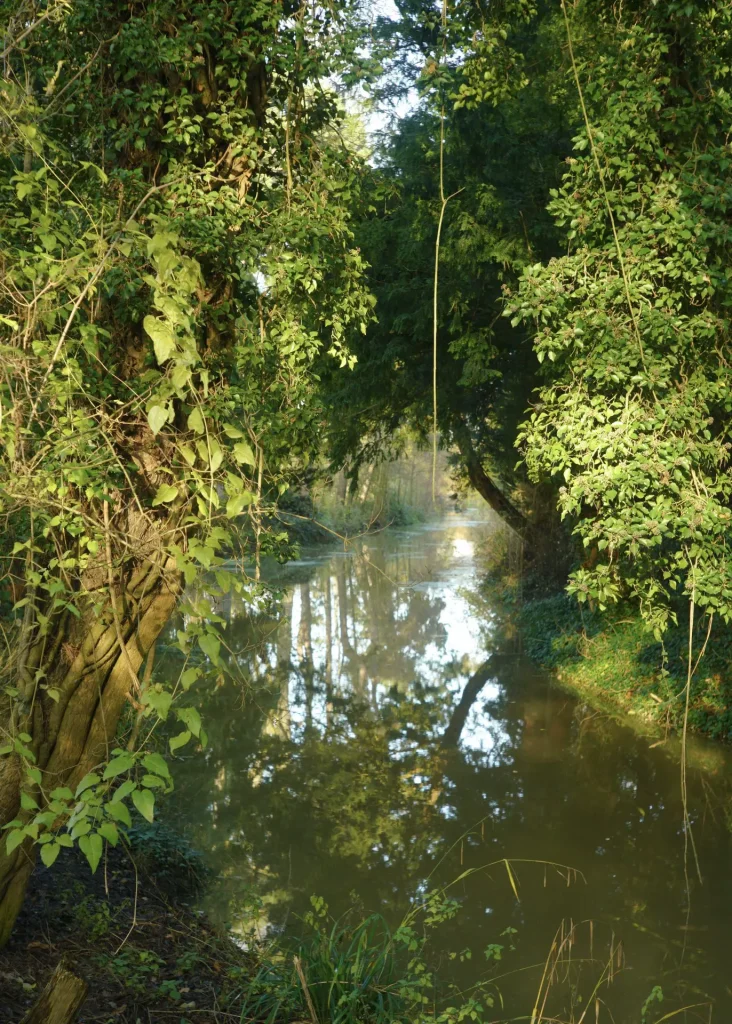
The beauty of Sonnar rendering, its transition zones and out of focus smoothness – altogether this rendering is why I keep going for Sonnar lenses to shoot with. Even when I may have a technically better lens sitting right next to them, I’m just not drawn to those more modern lenses in the same way. They don’t make the same images that I enjoy looking at, which Sonnars seem, at least for me.
Possibly more than anything, I love the way Sonnar lenses seem to create images that look very organic. There is a fingerprint the Sonnar lenses make when capturing images, that I deeply resonate with. I think it brings me back to simpler times, which is what some of us yearn for, maybe.
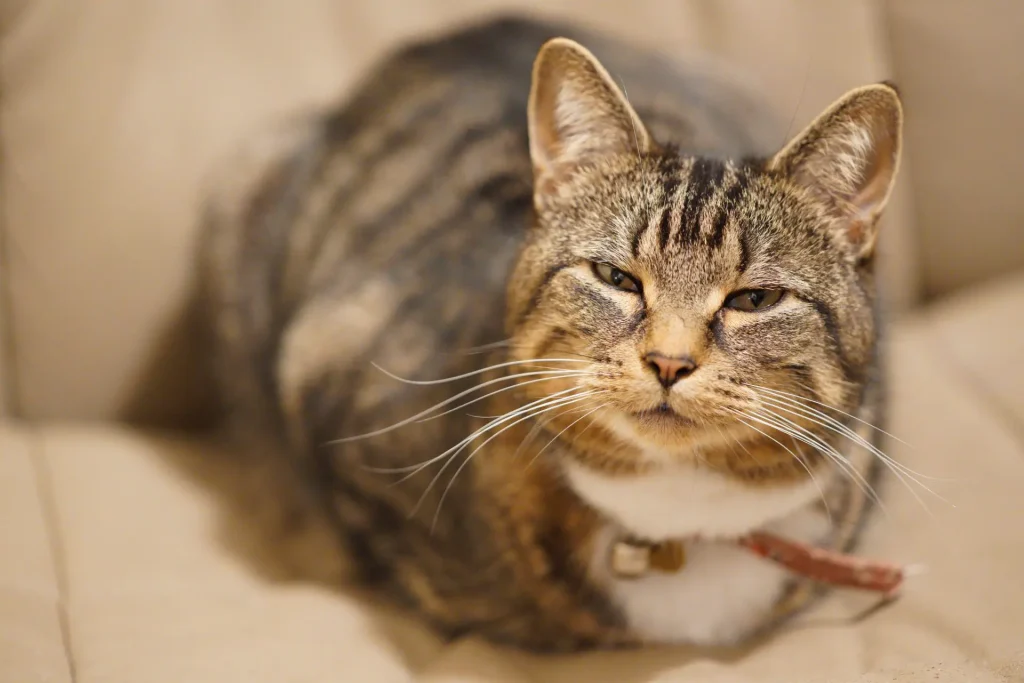
By the same token, I also love vintage motorcycles and enjoy riding them, even though there are faster and more capable motorcycles out there. The reason I enjoy them has less to do with getting me quickly and efficiently to my end destination, and more to do with the process and journey, which makes more of an emotional memory than a technical one.
The Sonnar lens is my artistic and emotional paintbrush. I have other lenses (brushes) I use also, but the Sonnar is my favourite because my photography is more about painting emotional pictures, and less about recording them in absolute detail.
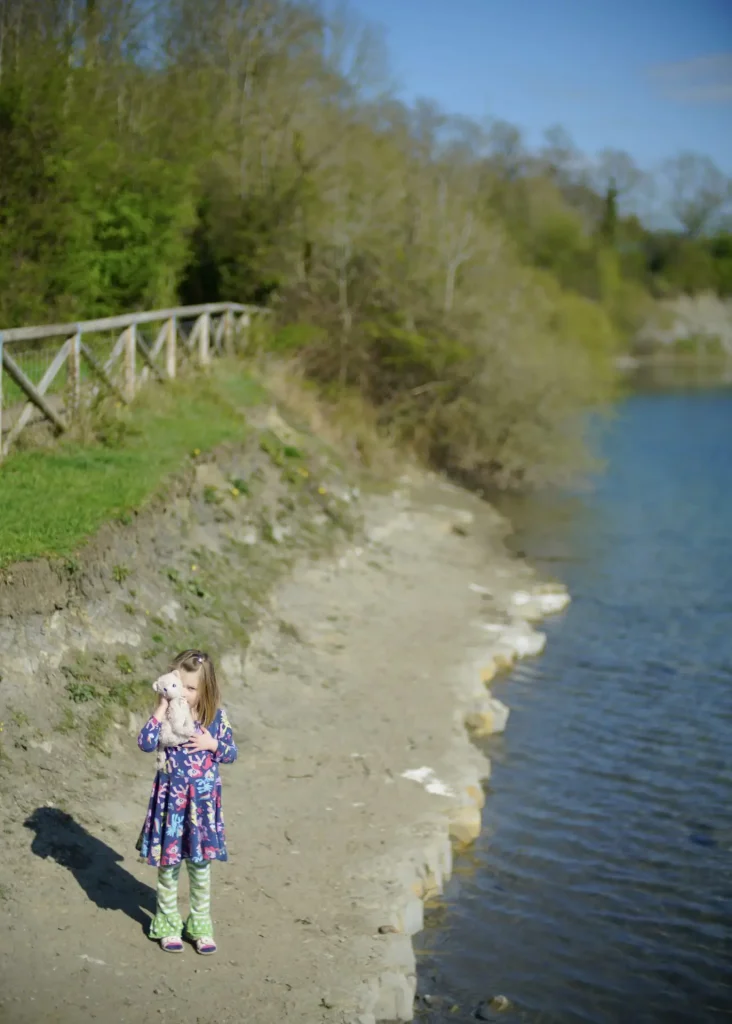
H: Ok, yeah, as we have established on the phone, I am totally onboard with all of that – I really couldn’t agree any more. Those shots are really nice, but do you have any taken with the ‘Bertele’ optics…?
C: Sure, here are some samples photos with the 1932 Bertele lens optics taken on a Sony A7RII with a Techart pro adapter.
All shots either f/2 or f/2.8. You’re welcome to share these, I’ve not posted them to our site yet, but will be adding them as pat of a Bertele update in June. Let me know what you think of the rendering. I find it a lot like the collapsible Contax Jena I loaned you. The main difference I find is the saturation and colours. These are all jpegs straight out of camera with some being cropped to 5×7 aspect ratio. The white balance was set in camera to 5600k for all.
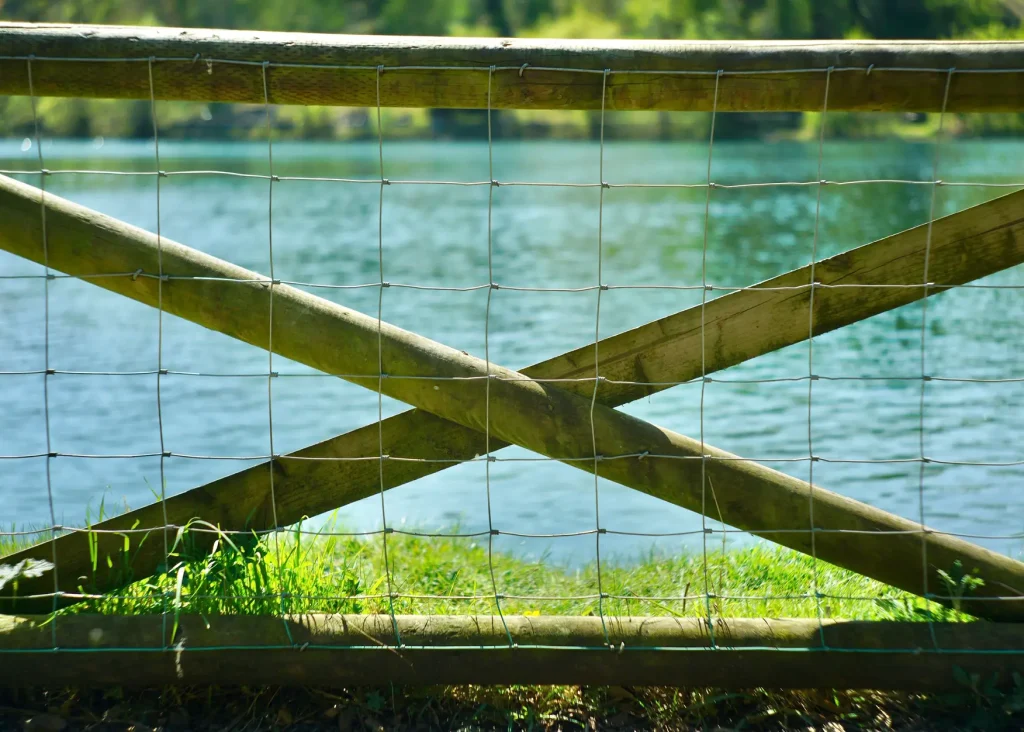
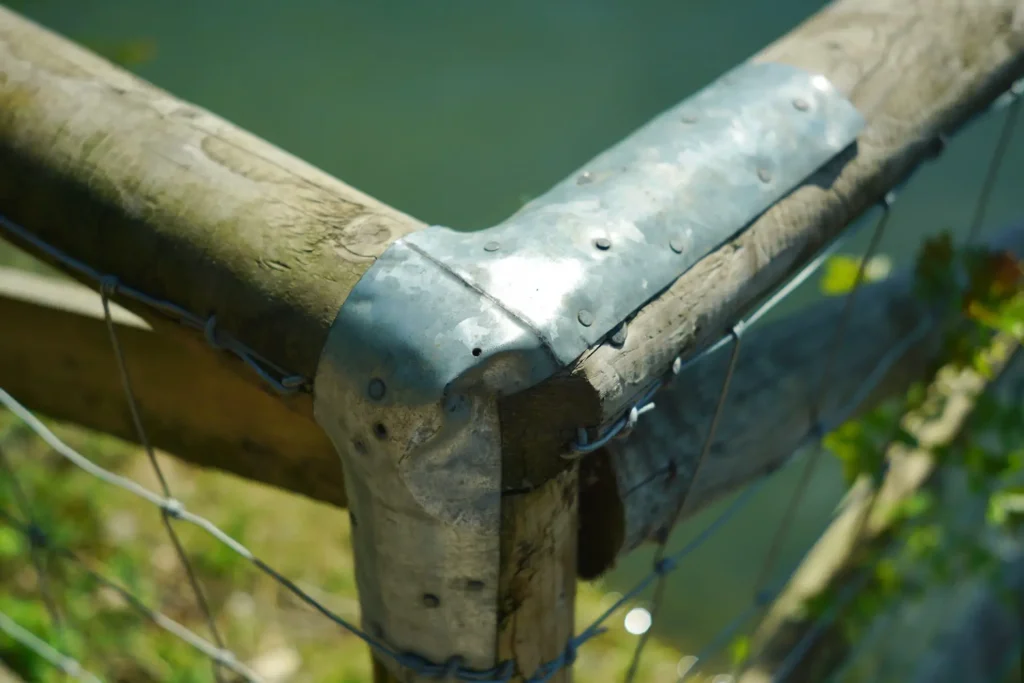
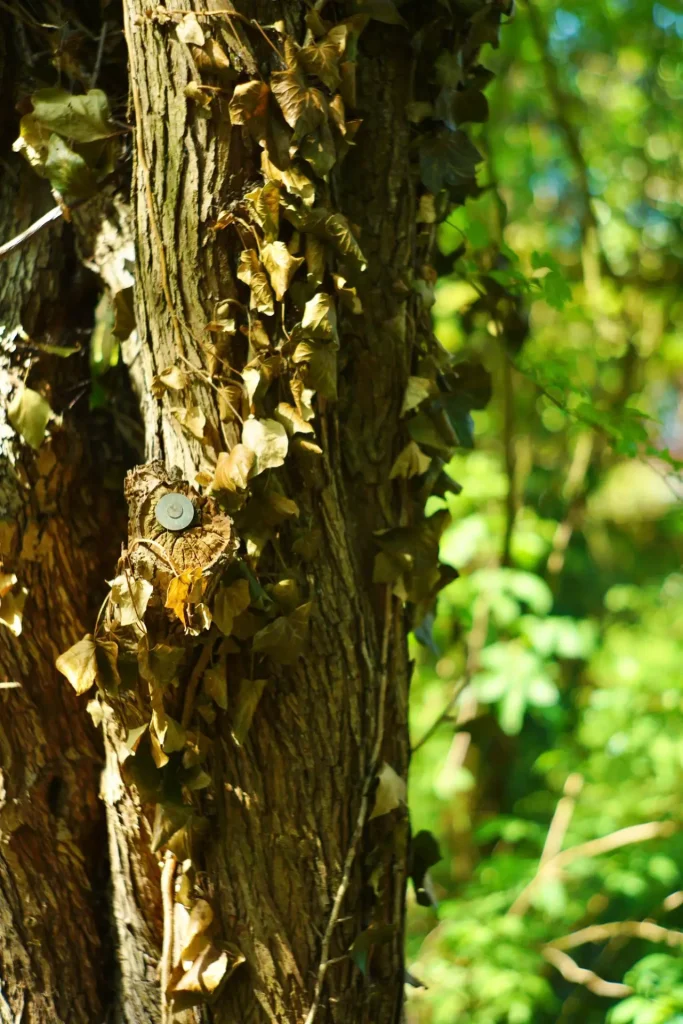

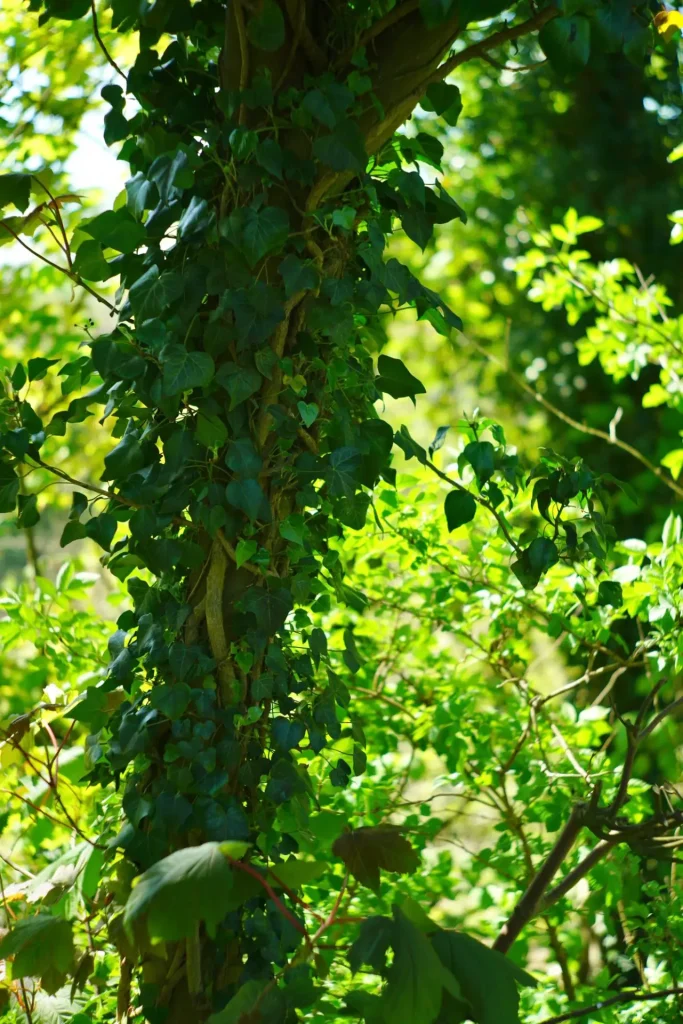
H: Whoa, they look great Chris! The thing I often miss when shooting older lenses is the more modern colours – I think you might be onto a winner with this! Classic Rendering with modern colours works very well for me!
So… The big question remains then – when will the ‘Bertele’ lenses be available?
C: I’m hoping to get the prototypes ready over the summer. We are fortunate that most of the optics for the lenses are now done, the 1932 formula is entirely ready, with the 1937 formula about half complete. Currently, we are finishing the pre-release design of the mechanics, and mechanical prototypes should start very soon. Once the prototypes are done, they will go out to a small group, and we will probably take a few months to collect all the feedback before finalising the design for production.
It’s one of these weird situations, where the mechanics are trailing behind the optics now, mostly because we scrapped a revised design I did in February, that both myself and a partner were not happy with, and went back and elaborated on the original design to focus more on quality of how the lens felt in use.
Some of the parts can be made at our workshop, some need to be made locally by certain precision CNC companies. These companies are now shutting or shut due to the Covid-19 pandemic, and the ones that remain open, are having months of delays in their work orders. So, partly we are now at the mercy of this.
Once the prototypes are sent out (you and Brian Sweeney are some of the few who we would like feedback from), I plan to take a few months getting feedback, before finalising the mechanical design. I am also going to do my own scientific tests on the lens during this time, including freezing it, heating it, purposely dropping it, spraying it with water…etc. All to ensure it meets our standards. It will not be weather sealed, but I don’t know any rangefinder lens that is. The goal is simply a high quality product, so I want to ensure we do what we can to achieve that!
Once a design is finalised, from there, it takes about 3-6 months to fabricate the parts and get their finishes applied. Once all the mechanics we aren’t making are back with us, I think we projected we could assemble, calibrate, quality check and prep about 20 Bertele lenses a month.
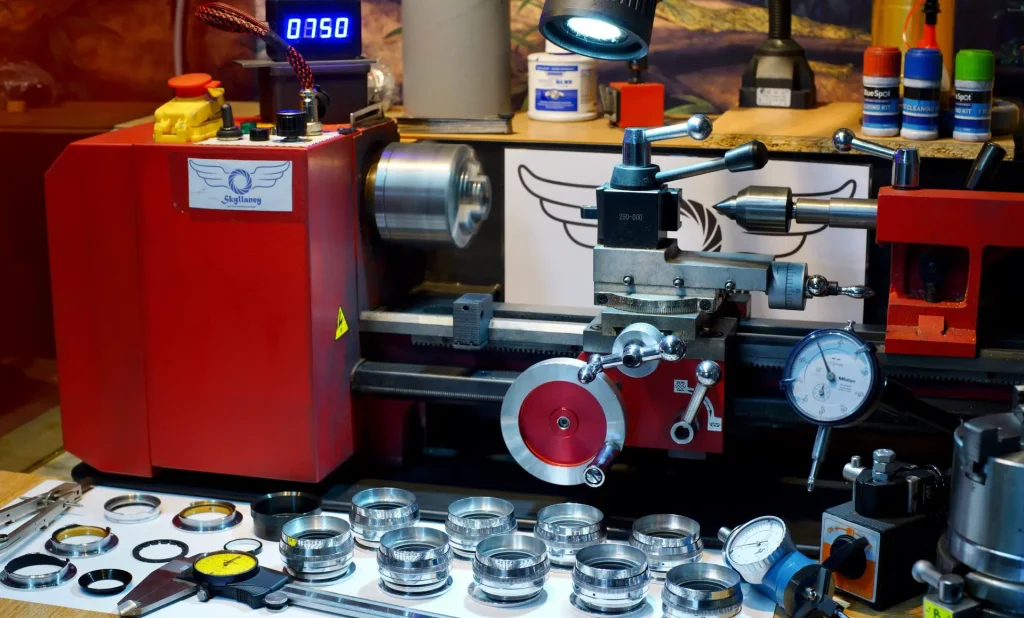
When it comes to production, as I said in a previous email, we are very fortunate being in the the Warwickshire area of England as it allows us to have access to quite a few specialised CNC shops and finishers. Aston Martin, Formula One and Rolls Royce are all in the area, and there are at least a dozen metalwork and fabrication companies that support the aerospace industry also. As such, aside from our own workshop, there are quite a few places that can help us with batches of certain precision parts for volume production, thus freeing up our workshop for the continued development of other projects.
I was initially targeting the end of November 2020, as when the first 20-30 finished lenses would be ready. With 20 available more each month. However, this probably will slip now into 2021, due to circumstances that are outside of our control. One way or another, personally, I’d rather get this right the first time, then attempt to rush things, which my partners agree with.
H: And in the meanwhile, I suppose, it is business as usual? Repairing, refurbishing and tweaking lenses for your customers, is that right?
C: Correct. Aside from services, 6-bit coding and restorations, we’ve been getting a lot of requests for conversion work. We are in the process of converting a few Zeiss Contax 50mm f/1.4 Planar’s for customers, and we’ve been developing conversion mechanics for the Contax G Zeiss 28mm f/2.8 Biogon and Helios-103 53cm f/1.8 lenses, that we hope to offer soon too.
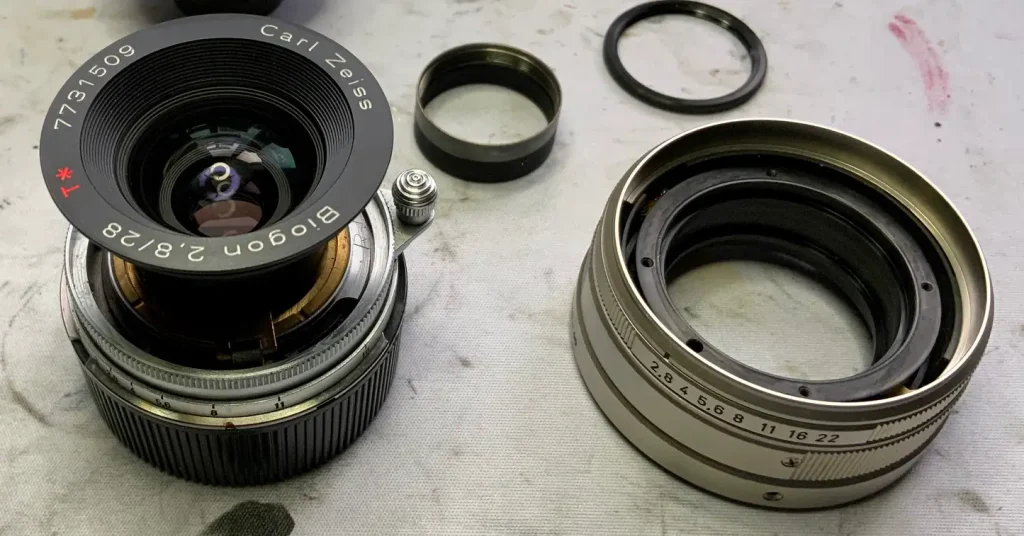
H: Brilliant, exciting times – all stuff that really fascinates me, and I know a lot of my readers will feel the same! Thanks Chris, I think that pretty much wraps it up for now!
Thanks for taking the time to answer all these questions again, it just remains for you to tell people how they can get in touch, and where they can find you online?
C: Thank you Hamish, it’s been a pleasure talking with you also. Some of the lenses we convert or restore can be found either on your store or through eBay. Otherwise, readers can contact us or find us as follows:
Email: [email protected]
Website: skyllaney.com
YouTube: here
Share this post:
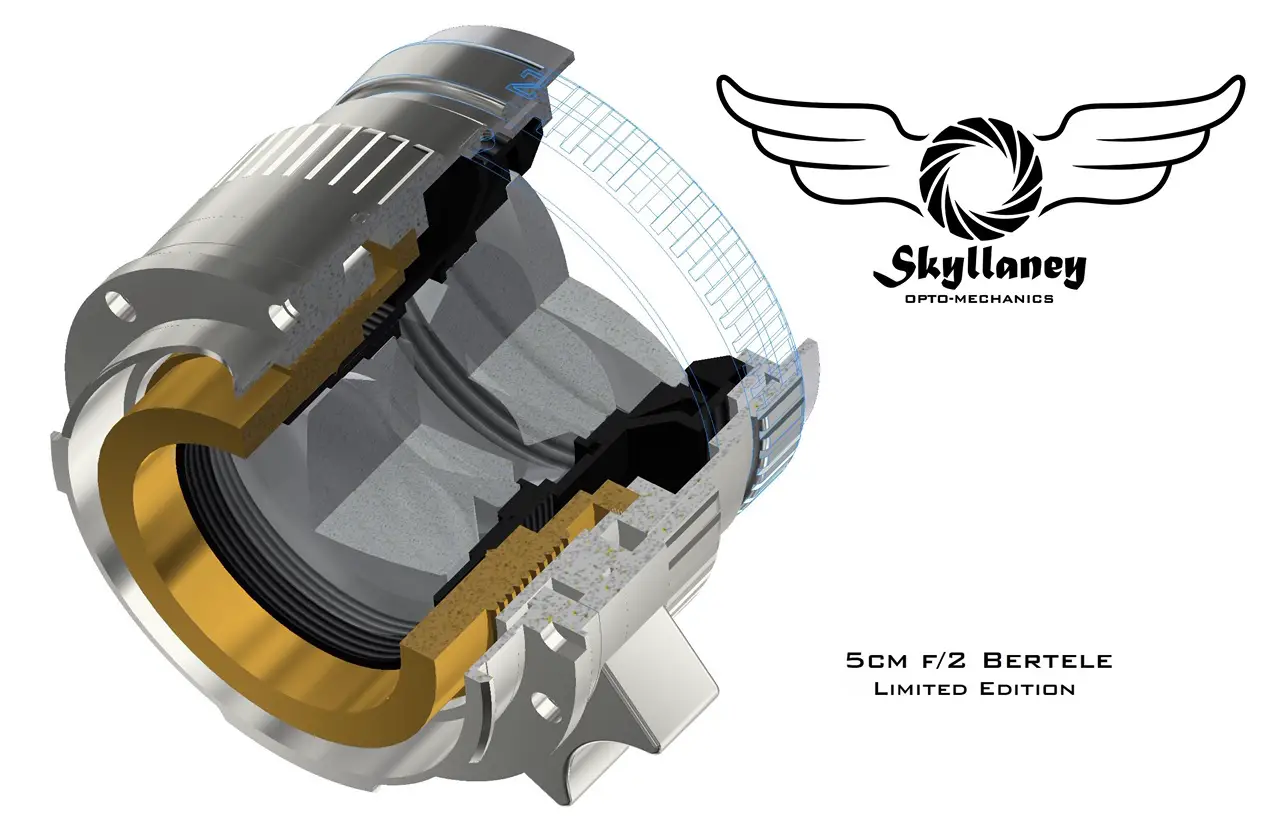








Comments
David on Bringing a New M-Mount Sonnar Lens to Market – An Interview with Chris Andreyo, Skyllaney Opto-Mechanics
Comment posted: 27/04/2020
Do you restore existing lenses for individual customers or do you only take orders from camera shops? I have a Jupiter lens that needs to be serviced and adjusted for use on Leica bodies.
Your eBay offering looks great and your stock has just been reduced by one lens. I will be using it on LTM bodies over the summer.
Can you recommend a lens hood for the Jupiter mount?
Comment posted: 27/04/2020
Terry B on Bringing a New M-Mount Sonnar Lens to Market – An Interview with Chris Andreyo, Skyllaney Opto-Mechanics
Comment posted: 27/04/2020
Chris Andreyo on Bringing a New M-Mount Sonnar Lens to Market – An Interview with Chris Andreyo, Skyllaney Opto-Mechanics
Comment posted: 27/04/2020
Many thanks for your kind words. Yes, I actually thoroughly enjoy the restoration process, is something my father used to do with various mechanical things like old time drills and vintage locks when I was a child. I find a a lot of the older lenses can be brought back to their former glory with a bit of time and patience.
We also restore lenses for customers now, not just camera shops anymore.
If you message us through our website, I’m pretty sure the Jupiter 8 you have can be restored, we’ve never had one come across us that couldn’t as of yet.
Regards the hood, I personally use the screw on ventilated 40.5mm hoods of eBay myself. I find they work well enough, especially with having the cutout to not entirely block the frame lines. The best hood I’ve used for these lenses, is actually a Soviet made push on hood. It seems to cover the lens much better then the screw on ventilated hoods, but my main issue with them seems they like to fall off too easily. They rely on a friction fit, that due to age, isn’t as tight anymore.
I’ve been considering designing a new hood for these, and making the 3D STL file freely available. This way, anyone with a 3D printer could print a new hood in black plastic if they wanted. But if a metal one is desired, I’d recommend the 40.5mm ventilated ones on eBay, for their price to performance ratio.
Thank you again for your kind comments!
Stephen J on Bringing a New M-Mount Sonnar Lens to Market – An Interview with Chris Andreyo, Skyllaney Opto-Mechanics
Comment posted: 27/04/2020
Your "Bertele project" looks really special, and I am looking forward to seeing them in production. From the pictures published here, barring the last but one... I see a similarity with my 5cm Nikkor H.C 1:2. ltm, I have bought and sold two 50mm Summicron lenses, a v2 DR and a v5. I also sold a f1:4 Nikkor made for their S2, for which I used an adapter to use on the M cameras.
Why? The f2 produces out of focus areas as just that... out of focus, rather than stars, bubbles, swirly bits or other stuff of that kind... (I can get images with some of those characteristics from a pinholio!)
You can still see what is there, but it is entirely in context with what is intended as the subject of the picture, rather than a distraction.
N.B. Regarding the last picture but one, maybe the fact that the out of focus character is slightly different is because it is located right at the edges of the frame? I am sure one of you can explain that.
... Oh and the colours are great too, but what about B&W?
Comment posted: 27/04/2020
Comment posted: 27/04/2020
Jake Oliver on Bringing a New M-Mount Sonnar Lens to Market – An Interview with Chris Andreyo, Skyllaney Opto-Mechanics
Comment posted: 27/04/2020
Where do I sign up for the Helios 103 conversion kit? I bought one and used it briefly with a poorly made contax RF/M39 adaper on my Sony for a while, and it was a surprisingly good little lens, would love to try it in M mount!
Comment posted: 27/04/2020
Brian on Bringing a New M-Mount Sonnar Lens to Market – An Interview with Chris Andreyo, Skyllaney Opto-Mechanics
Comment posted: 27/04/2020
https://cameraderie.org/threads/tales-from-the-greasy-side-miscellaneous-notes-on-the-jupiter-3.39373/
I'm happy to see Skyllaney doing re-manufacturing of vintage lenses, Leica mount conversions, and manufacturing a 90-year old design in the 21st century. I now have a real shop to refer people to when getting inquiries on Sonnar conversions and working on Jupiters.
Oh. Forgot- "Sonnars, I might have heard of those"...
https://cameraderie.org/threads/carl-zeiss-jena-5cm-f2-sonnar-1934-adapted-to-leica-thread-mount.37695/
Adrian K Cullen on Bringing a New M-Mount Sonnar Lens to Market – An Interview with Chris Andreyo, Skyllaney Opto-Mechanics
Comment posted: 28/04/2020
xin Wu on Bringing a New M-Mount Sonnar Lens to Market – An Interview with Chris Andreyo, Skyllaney Opto-Mechanics
Comment posted: 29/04/2020
THANK YOU SO MUCH.
The Magic of the Pre-War Zeiss Jena 5cm Sonnars - By Brian Sweeney - 35mmc on Bringing a New M-Mount Sonnar Lens to Market – An Interview with Chris Andreyo, Skyllaney Opto-Mechanics
Comment posted: 29/04/2020
jeremy north on Bringing a New M-Mount Sonnar Lens to Market – An Interview with Chris Andreyo, Skyllaney Opto-Mechanics
Comment posted: 29/04/2020
Tim on Bringing a New M-Mount Sonnar Lens to Market – An Interview with Chris Andreyo, Skyllaney Opto-Mechanics
Comment posted: 02/05/2020
I am very interested in this Contax G28 conversion. Will it be in Leica M and allow the corrective front filter to use on Sony A7 cameras? I look forward to any update on their website.
Comment posted: 02/05/2020
Comment posted: 02/05/2020
35mmc interview with Skyllaney Opto-Mechanics on Bringing a New M-Mount Sonnar Lens to Market – Skyllaney Opto-Mechanics on Bringing a New M-Mount Sonnar Lens to Market – An Interview with Chris Andreyo, Skyllaney Opto-Mechanics
Comment posted: 02/04/2022